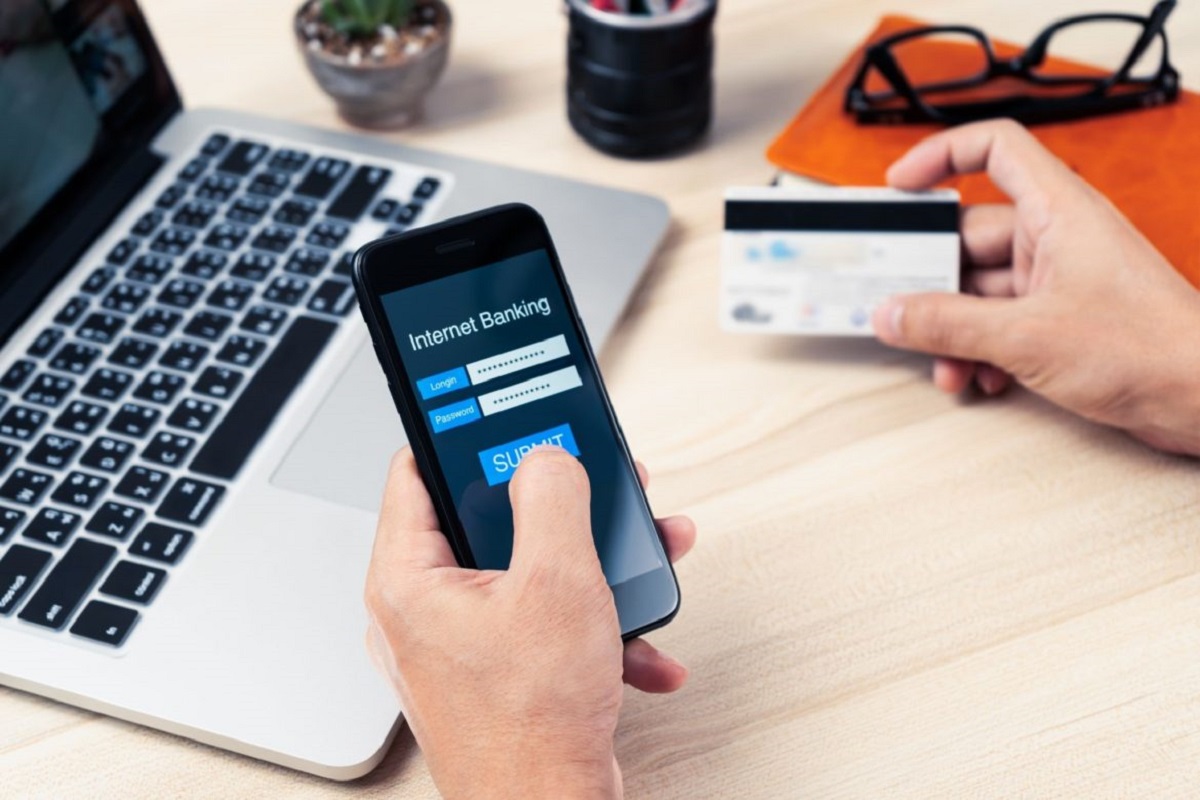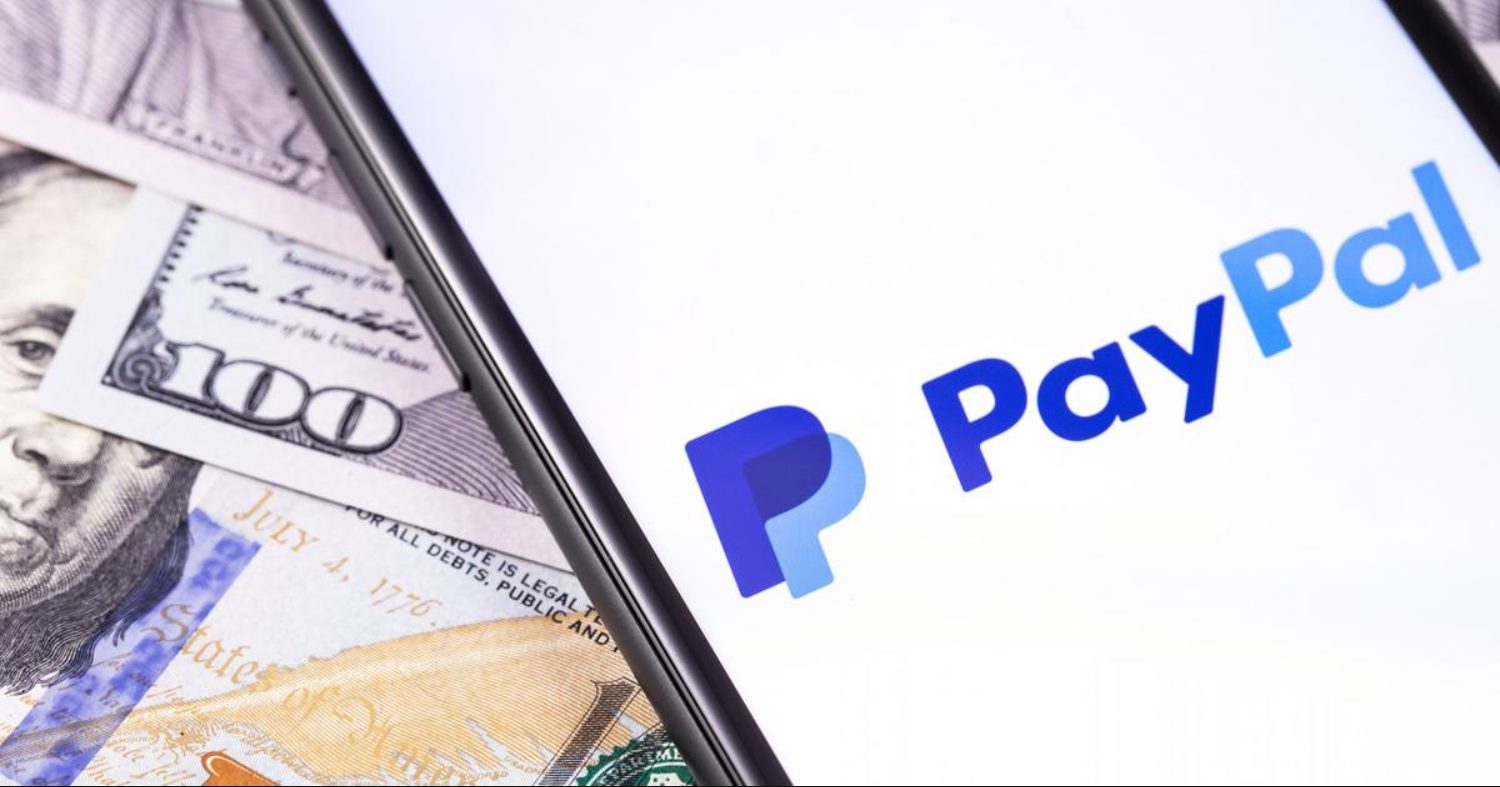Mobile Banking vs Regular Online Banking
With the rise of smartphones and the increasing reliance on mobile devices, mobile banking has become a popular option for managing finances. While it offers convenience and accessibility, there are some inherent security risks that make it somewhat less secure than regular online banking.
One of the primary advantages of mobile banking is the ability to perform financial transactions anytime and anywhere. This convenience allows users to check account balances, transfer funds, pay bills, and even deposit checks using their mobile devices. In contrast, regular online banking requires a computer or laptop to access banking services.
However, mobile banking comes with an increased risk of loss or theft. Mobile devices are more prone to being misplaced, lost, or stolen compared to computers. This puts the user’s financial information in jeopardy, especially if the device is not adequately protected with passwords or biometric authentication.
Moreover, mobile devices are vulnerable to malware attacks. Although security measures are in place to prevent unauthorized access and protect personal information, mobile operating systems and applications are still susceptible to viruses and hacking attempts. This puts users at a higher risk of fraudulent activities, such as phishing attacks or unauthorized transactions.
Security risks with mobile devices extend beyond malware attacks. Users often neglect to update their mobile operating systems and applications, leaving vulnerabilities unpatched. Additionally, mobile devices are frequently connected to public Wi-Fi networks, which are often less secure than private networks. This increases the chances of unauthorized access to personal information and financial data.
User error and carelessness can also compromise the security of mobile banking. Many individuals tend to overlook basic security practices such as using strong and unique passwords, logging out after each session, and being cautious while downloading applications or clicking on links from unknown sources. This opens the door for potential security breaches.
In contrast, regular online banking often employs additional verification methods to ensure the user’s identity. This may include the use of secure tokens or systems that generate one-time passwords for each transaction. Mobile banking, on the other hand, may lack such robust verification methods, making it easier for malicious individuals to gain unauthorized access to accounts.
While mobile banking offers convenience and flexibility, the inherent security risks make it somewhat less secure than regular online banking. To mitigate these risks, users must take proactive measures such as regularly updating their mobile devices and applications, using strong passwords, avoiding unsecured Wi-Fi networks, and exercising caution while performing financial transactions on their mobile devices.
Introduction
In today’s digital age, accessing and managing finances has become easier than ever before. With the advent of mobile banking, individuals can perform various financial transactions on the go, right from their smartphones or tablets. Mobile banking offers a level of convenience and accessibility that traditional in-branch banking or regular online banking cannot match.
However, as with any technology, mobile banking also comes with its own set of risks and vulnerabilities. While it offers convenience, it is important to understand that mobile banking may not be as secure as regular online banking. This is due to various factors, including the increased risk of loss or theft, vulnerability to malware attacks, security risks associated with mobile devices, user error and carelessness, and the lack of robust verification methods.
In this article, we will explore these factors in detail to understand why mobile banking is somewhat less secure than regular online banking. By being aware of these risks, users can take proactive steps to protect their finances and personal information while utilizing the convenience of mobile banking.
It is crucial to emphasize that mobile banking is not inherently unsafe. Banks and financial institutions have implemented security measures to safeguard user information and transactions. However, certain aspects of mobile banking and the nature of mobile devices make them more vulnerable to security breaches and unauthorized access.
Throughout this article, we will delve into the specific risks and vulnerabilities associated with mobile banking, providing insights and guidance on how to mitigate these risks. By understanding both the convenience and limitations of mobile banking, individuals can make informed decisions about their financial transactions and take necessary precautions to protect their financial well-being.
Convenience of Mobile Banking
One of the key advantages of mobile banking is the unparalleled convenience it offers. With a few taps on their mobile devices, users can access their bank accounts, transfer funds, pay bills, and even deposit checks without needing to visit a physical branch or sit in front of a computer.
Mobile banking provides users with the flexibility to manage their finances anytime and anywhere. Whether they are traveling, at work, or relaxing at home, individuals can easily and quickly handle their banking needs from the palm of their hand.
Gone are the days of waiting in long queues at the bank or rushing to meet banking hours. Mobile banking allows users to check their account balances in real-time, monitor their transactions, and receive instant notifications for any updates or changes to their accounts.
Furthermore, the convenience of mobile banking extends to transferring money between accounts. Whether it’s transferring money to a family member or making payments to vendors, mobile banking provides seamless and immediate transactions. This is particularly helpful in emergency situations or last-minute payments.
In addition to basic banking services, mobile banking apps often offer additional features such as budgeting tools, expense tracking, and personalized financial insights. Users can easily monitor their spending habits, set savings goals, and receive recommendations for improving their financial health, all from the convenience of their mobile devices.
Overall, mobile banking offers a level of convenience and accessibility that is unmatched by traditional in-branch banking or regular online banking. It empowers individuals to take control of their finances, make timely transactions, and stay informed about their accounts in real-time. However, it is essential to recognize that this convenience comes with certain security risks that users need to be aware of and take precautionary measures to mitigate.
Increased Risk of Loss or Theft
While mobile banking offers unparalleled convenience, it also increases the risk of loss or theft compared to regular online banking. Mobile devices, such as smartphones and tablets, are more prone to being misplaced, lost, or stolen, leading to potential exposure of sensitive financial information.
In today’s fast-paced world, it is common for individuals to constantly carry their mobile devices with them. Whether it’s in their pockets, bags, or even left unattended on a table, these devices are susceptible to being misplaced or forgotten. Unfortunately, this simple act of carelessness can put users’ financial information at risk if their mobile devices fall into the wrong hands.
Moreover, the compact nature of mobile devices makes them easier targets for thieves. According to studies, mobile phone theft is a common occurrence, with thousands of devices reported stolen every day. If a thief gains access to a user’s mobile device without any security measures in place, they can potentially access the individual’s mobile banking app and perform unauthorized transactions.
To mitigate the risk of loss or theft, it is crucial for users to take proactive steps to secure their mobile devices. This includes setting up strong passwords, utilizing biometric authentication features such as fingerprint or face recognition, and enabling remote tracking and wiping capabilities in case the device is lost or stolen.
Additionally, users should exercise caution in public spaces, such as cafes or airports, where the risk of theft is higher. Keeping a close eye on their mobile devices and avoiding leaving them unattended can help minimize the risk of theft.
It is also important for users to regularly backup their mobile banking app and associated data. This ensures that even if their device is lost or stolen, they can still retrieve their financial information and transactions on a new device without any disruption.
While the increased risk of loss or theft is a concern with mobile banking, taking these precautionary measures can help users safeguard their financial information and maintain control over their accounts.
Vulnerability to Malware Attacks
One of the significant security risks associated with mobile banking is the vulnerability to malware attacks. While banks and financial institutions have implemented security measures to protect user data, mobile devices and their operating systems are not immune to viruses and other malicious software.
Malware can be introduced to a mobile device through various means, such as downloading infected apps from unauthorized sources, clicking on suspicious links, or even connecting to unsecured Wi-Fi networks. Once the malware infiltrates the device, it can gain access to sensitive financial information and compromise the security of mobile banking apps.
Phishing attacks are a common method used by cybercriminals to trick users into revealing sensitive information such as usernames, passwords, or even banking transaction details. These attacks typically involve sending deceptive emails or messages that mimic legitimate banking institutions, luring users into providing their personal information unknowingly.
To minimize the risk of malware attacks, users should only download mobile banking apps from official app stores such as Google Play or the App Store. These platforms have measures in place to vet and verify the authenticity and security of the apps they host.
Furthermore, it is crucial to keep mobile device operating systems and applications updated. Developers regularly release updates that address security vulnerabilities and patch any known issues. By neglecting these updates, users leave their devices susceptible to malware attacks that exploit these vulnerabilities.
It is also essential to exercise caution while browsing the internet or accessing emails on mobile devices. Avoid clicking on unknown or suspicious links and be cautious when providing personal information online. Utilizing secure and trusted Wi-Fi networks is also vital to protect against potential malware attacks.
By being vigilant and taking appropriate security measures, such as installing reputable security software and regularly scanning for malware on mobile devices, users can significantly reduce their vulnerability to these types of attacks.
Security Risks with Mobile Devices
Mobile devices themselves present several security risks when it comes to mobile banking. While banks and financial institutions strive to ensure the security of their mobile apps, the nature of mobile devices makes them more vulnerable to certain risks.
One primary concern is the user’s lack of control over the security measures implemented on their mobile devices. Unlike computers or laptops, where users have more control over the security settings and software, mobile devices often have limited options for customization.
For instance, some mobile devices have weaker security features or limitations on password complexity, making them more susceptible to unauthorized access. Additionally, the smaller screen and touch interface of mobile devices may present challenges in accurately entering complex passwords, increasing the risk of password compromises.
Another security risk arises from the use of mobile applications. While app stores have screening processes to ensure the legitimacy of apps, some malicious apps can still bypass these measures and make their way onto user devices. These apps may contain hidden malware or be designed specifically to collect sensitive information.
Furthermore, mobile devices are frequently connected to various networks, including public Wi-Fi. Public networks can be vulnerable to hackers who may intercept data transmitted between the device and the banking server. This exposes users to the risk of unauthorized access and potential compromise of their financial information.
Another concern is the potential for physical surveillance of mobile devices. Mobile devices are more prone to physical theft or tampering compared to desktop computers. Intruders can gain access to sensitive information if they have physical possession of the device, undermining the security of mobile banking apps.
To mitigate the security risks associated with mobile devices, users can implement best practices such as enabling device encryption, utilizing secure and trusted networks, regularly updating mobile operating systems and applications, and installing reputable security software.
It is also recommended to enable features such as remote locking and wiping, in case the device is lost or stolen. These features allow users to remotely protect their data and prevent unauthorized access.
By being aware of the security risks specific to mobile devices and taking appropriate precautions, users can enhance the security of their mobile banking activities and protect their sensitive financial information.
User Error and Carelessness
While mobile banking provides convenience and accessibility, user error and carelessness can significantly compromise the security of financial information. Many individuals unknowingly engage in practices that put their mobile banking accounts at risk.
One common mistake is the use of weak or easily guessable passwords. Many users opt for common passwords or reuse the same password across multiple accounts, making them vulnerable to unauthorized access. Strong passwords, consisting of a combination of letters, numbers, and special characters, should be used to protect mobile banking accounts.
Another common error is failing to log out of mobile banking apps after each session. This leaves the app open and accessible to anyone who gains physical access to the mobile device. It is essential to log out and close the app once banking tasks are complete to prevent unauthorized access.
Carelessly downloading applications from unofficial sources also exposes users to security risks. Malicious apps can be designed to mimic legitimate banking apps, tricking users into providing their login credentials and compromising their financial information. Only download apps from trusted sources such as official app stores and ensure they have positive reviews and a history of regular updates.
Clicking on suspicious links received through emails, messages, or social media platforms is another common mistake that can lead to security breaches. These links may direct users to fake banking websites designed to collect personal information or install malware. Users should always exercise caution and verify the authenticity of the source before clicking on any links.
Additionally, users should be cautious when conducting mobile banking transactions while connected to public Wi-Fi networks. Public networks may not have adequate security measures in place, making it easier for hackers to intercept sensitive information. Utilizing a virtual private network (VPN) or accessing banking services through secure networks can help mitigate this risk.
To minimize user error and carelessness, education and awareness play a vital role. Banks and financial institutions should provide clear guidelines and resources to educate users on best practices for secure mobile banking. Users should also stay vigilant, keep their mobile devices updated with the latest security patches, and exercise caution while performing financial transactions on mobile devices.
By avoiding common pitfalls and adopting good security habits, users can reduce the risk of security breaches and protect their financial information while enjoying the convenience of mobile banking.
Lack of Verification Methods
One of the concerns with mobile banking is the relative lack of robust verification methods compared to regular online banking. While regular online banking often employs additional layers of security to verify the user’s identity, mobile banking may rely on less stringent verification processes, making it somewhat less secure.
Regular online banking often utilizes methods like secure tokens or systems that generate one-time passwords for each transaction. These additional verification steps provide an extra layer of security, ensuring that only authorized users can access and perform transactions on their accounts.
On the other hand, mobile banking apps may have less stringent verification methods, relying primarily on usernames and passwords or biometric authentication. While biometric authentication, such as fingerprint or face recognition, can enhance security to some extent, it is still not foolproof and can be circumvented under certain circumstances.
Furthermore, mobile devices may lack the capability for features like secure tokens or specialized hardware that can provide added authentication. This limits the options for implementing stronger verification methods in mobile banking apps.
While mobile banking apps do implement security measures like encryption and two-factor authentication, it is important for users to remain vigilant and proactive in securing their accounts. Users should create strong and unique passwords, avoid using easily guessable information, and regularly change their passwords to reduce the risk of unauthorized access.
Additionally, users should enable mobile device security features such as remote locking and fingerprint or face recognition, if available, to provide an extra layer of protection against unauthorized access.
It is crucial for users to monitor their mobile banking accounts regularly for any suspicious activity. Banks and financial institutions often provide options for notifications and alerts, allowing users to be immediately informed of any unauthorized transactions or account access.
As the popularity of mobile banking continues to grow, it is important for banks and financial institutions to continually evaluate and improve the verification methods implemented in mobile banking apps. This includes exploring new technologies and security features to ensure a higher level of security and protection for user accounts and transactions.
By being cautious and taking proactive measures to secure their mobile banking accounts, users can mitigate the risks associated with the lack of robust verification methods and enjoy the convenience of mobile banking with greater peace of mind.
Conclusion
Mobile banking has revolutionized the way we manage our finances, providing unprecedented convenience and accessibility. However, it is important to acknowledge that mobile banking is somewhat less secure than regular online banking due to various factors.
The increased risk of loss or theft associated with mobile devices requires users to be vigilant and adopt security measures such as strong passwords, biometric authentication, and remote tracking and wiping capabilities. Similarly, the vulnerability to malware attacks emphasizes the importance of downloading apps from trusted sources, regularly updating devices and applications, and staying cautious while browsing.
Security risks associated with mobile devices themselves are mitigated by implementing encryption, utilizing secure networks, and keeping devices updated. User error and carelessness can be minimized by practicing strong password hygiene, logging out after each session, and being cautious with app downloads and clicking on suspicious links.
While mobile banking offers convenience, some concerns arise due to the relative lack of robust verification methods. Users should take proactive steps to secure their accounts, including creating strong passwords, enabling biometric authentication, and monitoring their accounts for any unauthorized activity.
Overall, it is essential for users to strike a balance between convenience and security when using mobile banking. By being aware of the risks involved and implementing best practices, individuals can protect their financial information and enjoy the benefits of mobile banking with greater peace of mind.

























